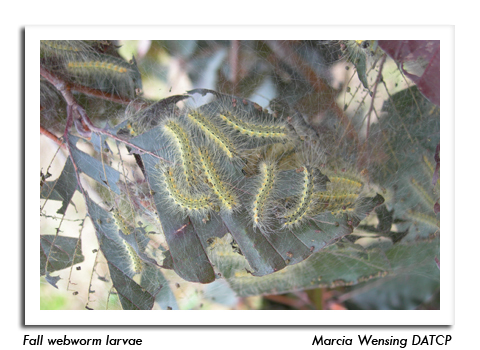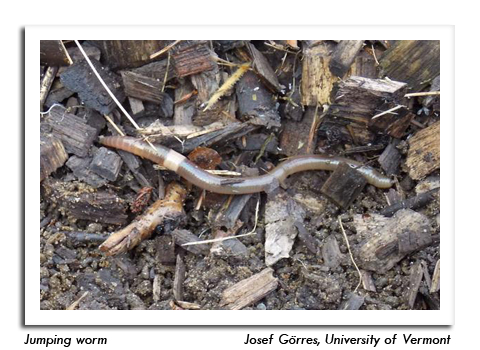
 |
|
|
Nursery & Forest
Volume 63 Number 13 Date 07/26/2018 VIBURNUM CROWN BORER - Nursery inspectors determined that highbush cranberry shrubs in Oneida County showing branch flagging were infested with the viburnum crown borer. The larvae of this clearwing moth attack the base of viburnum shrubs, tunneling in the cambium just under the bark from below the soil line to about 18 inches high. Initial symptoms include wilting, sparse foliage and early fall color. Younger plants, those that have just been transplanted, and plants under stress, appear to be more susceptible to infestation. Maintaining healthy viburnum plants by watering, mulching, and preventing wounds can reduce the risk of attack. Protecting susceptible viburnums with an insecticide sprayed on the bark of the plant from the soil line to 18 above ground may also be considered, though timing is critical. Treatments must be made while adult moths are active beginning in June. The use of pheromone traps is advised to determine the male moth flight period. FALL WEBWORM - The characteristic nests constructed by fall webworm larvae are appearing in southern and central Wisconsin. This native species feeds on over 120 different species of deciduous forest, shade, fruit, and ornamental trees, but avoids conifers. Its nests or webs appear in trees later in the season than nests made by other web- and tent-making species found in Wisconsin. The larvae inside the nests are pale yellow with blackish lateral spots. Mature caterpillars develop tufts of silky hairs and are about one-inch long. Products containing Bt are effective against young caterpillars if the material penetrates the webbing, but manual removal or disruption of the webs is the preferred form of control. Pruning infested branches is not warranted, however, and causes unnecessary harm to the host plants. -- Timothy Allen, DATCP Nursery Inspector JUMPING WORMS - Invasive "jumping worms" were recently found by inspectors in the growing area of a Columbia County nursery. This damaging Asian pest, named for its unusual thrashing behavior when disturbed, was first detected in the state in 2013. The term 'jumping worms' refers to multiple species, all in the genus Amynthas. Jumping worms reproduce asexually and infest soil in high densities, altering soil texture and composition. Their feeding strips nutrients, kills plants, and increases erosion. A single worm can start a new population. Human-assisted dispersal by moving potted plants, soil, compost, mulch and fishing bait is a leading contributor to the spread of jumping worms. Actions recommended to reduce their spread include cleaning soil and debris from vehicles, equipment, gardening tools, and shoes before moving to and from a work site or recreational area. Gardeners and property owners who suspect they have jumping worms should keep any potentially infested plant, soil and mulch on site. These materials should not be sold, transplanted, or shared. The 1.5 to 8-inch long worms can be identified by the smooth, whitish non-segmented band around the body (clitellum). Other common worm species have a raised band. More information can be found on the DNR website at https://dnr.wi.gov/topic/Invasives/fact/jumpingworm/index.html. Sightings of jumping worms can be reported to the Wisconsin DNR by emailing invasive.species@wi.gov or uploading a photo to the First Detector's Network, https://fyi.uwex.edu/wifdn/get-involved/report-invasive-species. -- Tim Boyle, DATCP Nursery Inspector 



|
|
|